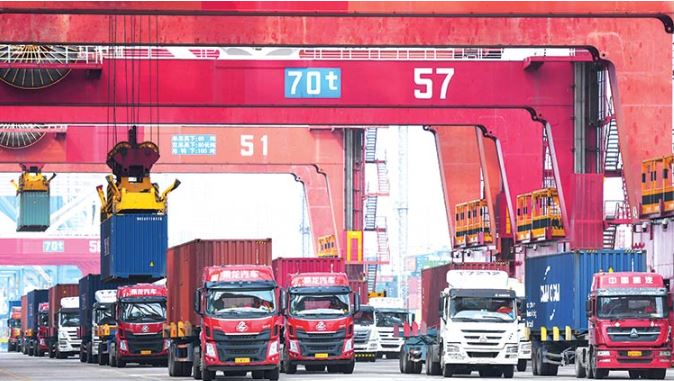Pakistan has approved $7.2 billion railway line upgradation project between Peshawar and Karachi under the China Pakistan Economic Corridor, CPEC.
The approval of the project to upgrade the 1,872 km-long railway track from Peshawar to Karachi is a big milestone for the second phase of the CPEC, said Lt. Gen. (r) Asim Saleem Bajwa, chairman of the CPEC Authority.
The main railway will link the southern Chinese city of Kashgar with the Gwadar port on the southwest coast of Balochistan province. The Chinese President Xi Jinping will open the project during his upcoming visit to Pakistan.
The project includes the modernisation of the railway that runs from northwest Peshawar to South Karachi, with a length of 1,872 km, and an increase in the speed of passenger trains from 110 to 160 km per hour.
Bajwa added that the approval paved the way for final negotiations with China to finance the project with the knowledge of the International Monetary Fund, while the World Bank linked the project’s success to bringing about governance reforms in the railways.
China’s exports shrink: China’s exports contracted in May as global coronavirus lockdowns continued to devastate demand, while a sharper-than-expected fall in imports pointed to mounting pressure on manufacturers as global growth stalls.
The sombre trade readings for the world’s second-biggest economy could pile pressure on policymakers to roll out more support for a sector that is critical to the livelihoods of more than 180 million workers. Total trade accounts for about a third of the economy.
Overseas shipments in May fell 3.3% from a year earlier, after a surprising 3.5% gain in April, customs data showed on Sunday. That compared with a 7% drop forecast in a Reuters poll.
While exports fared slightly better than expected, imports tumbled 16.7% compared with a year earlier, worsening from a 14.2% decline the previous month and marking the sharpest decline since January 2016.
It had been expected to fall 9.7% in May.
“Exports benefited from the ASEAN (Association of Southeast Asian Nations) market and exchange rate depreciation, while imports were affected by insufficient domestic demand and commodity price declines,” said Wang Jun, chief economist of Zhongyuan Bank.
As a result, China posted a record trade surplus of $62.93 billion last month, the highest since Reuters started tracking the series in 1981, compared with the poll’s forecast for a $39 billion surplus and $45.34 billion surplus in April. China’s trade surplus with the United States widened to $27.89 billion in May, Reuters calculation based on customs data showed.
This comes as Sino-US tensions are again on the rise, though sources say President Donald Trump has little choice but to stick with a Phase 1 trade deal for now.
Both official and private factory surveys for May showed sub-indexes for export orders remained deep in contraction. Profits at China’s industrial firms fell almost 30% in the January-April period.
Analysts said bright spots like exports of medical supplies, of which China has dominated the supply chain, masked the strong headwinds faced by exporters stuck with unsold stock and cancelled orders from abroad.
In the first half of May, China shipped 63.2 billion yuan of medical supplies, Reuters calculations from customs data showed, compared with 71.2 billion yuan in the March-April period.
“Even though the export performance exceeded expectations, the difficulties faced by traditional trade enterprises should not be ignored,” said Zhang Yi, chief economist at Zhonghai Shengrong Capital Management.
Highlighting the uncertain outlook, the Chinese government said in late May it was not setting an annual growth target, for the first time since 2002, reflecting a cautious stance on policy easing, although some expect domestic demand to bounce back somewhat, while export conditions remain unpredictable. The economy shrank 6.8% in the first quarter from a year earlier.
“In the future exports will basically see negative growth, but it is not necessary to be too pessimistic. It should be within -10%,” Zhang said.
“Imports are subject to greater uncertainty, depending on the recovery of domestic market demand and the implementation of the Phase 1 agreement between China and the United States,” he said.
Meanwhile, the Federal Reserve will meet next week for the first time since US states began easing shutdowns imposed to stop the coronavirus pandemic, unexpectedly boosting employment numbers after two months of massive layoffs.
The world’s largest economy added 2.5 million jobs and the unemployment rate fell in May, according to the Labor Department, even as COVID-19 remains a threat to daily life.
The Fed moved swiftly and aggressively as soon as the pandemic struck, even before businesses were shut down nationwide, as the policy-setting Federal Open Market Committee (FOMC) slashed its key lending rate to zero in March.




